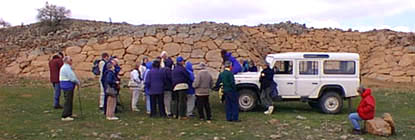FUTURE PERSPECTIVES

Figure 36
There
are two long-term goals to this aspect of the Kerkenes Project.
1. (a). Quantifiable
spatial and relational analyses that will help in the identification
and description of cultural traits. These might include such areas
of interest as the emphasis given to the mobility of defending forces,
the relationship between elite residences and water management systems,
preferences for architectural forms within definable urban zones.
It is expected that the results of this approach will demonstrate
that the underlying cultural signatures which are displayed through
the concepts and use of space will be significantly different from
Archaic Greek and Hellenistic cities on the one hand, and from Neo-Hittite
(Anatolian Iron Age) cities on the other (to give only two of many
possible examples).
(b). Examination of the possibilities that there might be discernable
changes in building forms over the two-three generations during
which the city was occupied and that, furthermore, these changes
might represent a "Anatolianisation" of the urban form.
If these changes are quantifiable, i.e. are real rather than illusory,
research design could be developed to embrace a range of possible
explanations that could then be tested by targeted research (including
test excavation).
2. Through the
use of CAD programs, cloned digital photography, graphics rendering
and virtual reality programs it is thought that it will be possible
to extend the level of public outreach through the medium of electronic
simulation. Such simulations will be made available via CD ROM,
DVD, the Project Web site and, perhaps, through museum based large
screen or holographic installations.
Visitors to Kerkenes
(Fig. 36) will be able to benefit from the new technology for 3D
displays and animation in cyber space.